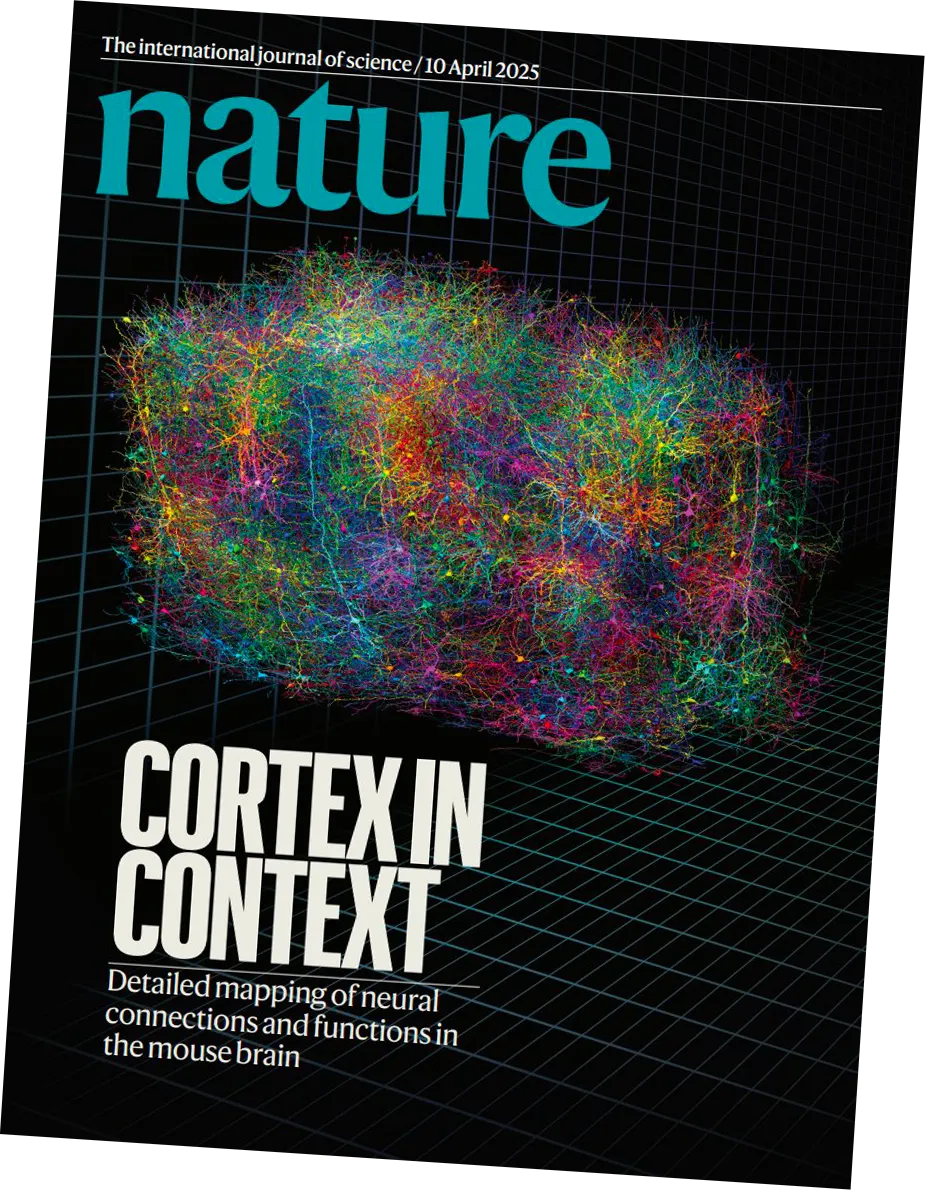The Platform for Biomedical Moonshots
Neuroscience takes on the most complex of all biological systems. DataJoint was built by scientists to handle the complexity of reverse engineering the brain.
Neuroscience takes on the most complex of all biological systems. DataJoint was built by scientists to handle the complexity of reverse engineering the brain.


.png)
“*It is no use asking for the impossible*, such as, say, the exact wiring diagram for a cubic millimeter of brain tissue and the way all its neurons are firing.”
— Francis Crick, 1916 – 2004
But some scientists try anyway.
And DataJoint helps them succeed.
Launched in 2016 by the U.S. Intelligence Advanced Research Projects Activity (IARPA), the MICrONS Program set out to reverse-engineer the brain’s computational strategies by linking what neurons do (function) to how they’re connected (structure).

To map and understand how thousands of neurons work together — creating a digital twin of brain structure and function at millisecond and nanometer resolution.

This was not just a moonshot — it was a systems neuroscience milestone. MICrONS redefined what it means to understand the brain, and laid the groundwork for the next generation of AI systems inspired by real neural architectures.
of mouse visual cortex
500 million synapses
of multi-modal data
from project start to publication
DataJoint powered the functional imaging study that captured how neurons in the living brain respond to natural stimuli. Using multiphoton mesoscopy, the team recorded calcium signals from tens of thousands of neurons in transgenic mice as they viewed natural scenes, virtual reality environments, and synthetic visual patterns.
This produced one of the largest and most detailed datasets of in vivo brain activity ever recorded — setting the stage for subsequent structural analysis and registration.

The functional data pipeline, built in DataJoint, integrated contributions from multiple collaborating scientists in US and EU institutions. It orchestrated acquisition, processing, and analysis of neuronal activity and behavior — enabling rapid iteration and shared insight within the team.
Scientists could query the latest results to monitor progress, share insights, and make decisions without bottlenecks. DataJoint automated routine computations and issued real-time updates, keeping experimental and analysis workflows in sync. While experimentalists refined imaging conditions, data scientists trained and tested models — all on a living, shared dataset.

Signal quality was a top priority. The pipeline quantified key indicators of experimental success — imaging clarity, tissue motion, brain state, laser power, and calcium indicator response — for every session. DataJoint continuously tracked these metrics, and the team used them to guide methodological improvements throughout the project.
As protocols evolved, these controls ensured consistency across hundreds of imaging sessions, leading to the highest standard of reliability in large-scale functional recordings.

As the two other principal teams completed their analyses, DataJoint pipelines incorporated selected information from the morphology and connectivity analysis — enabling scientists to query functional data in the context of structural features
This unified pipeline enabled scientists to write simple, expressive queries in DataJoint Python that span both structure and function — for example, identifying the shape of a neuron and its input connections, then querying how it responded to specific stimuli. Before this, such integrated analysis was largely hypothetical. With DataJoint, it became real.

A substantial portion of the MICrONS functional dataset is now public — shared as a structured, queryable pipeline with functional data on the “Platinum Mouse.”
But publishing this pipeline was no small task. The original “Cajal” pipeline developed by the BCM team and used internally for years was extraordinarily rich and complex — a living system developed over a decade of experimentation and collaboration.
To make it accessible, the team extracted a simplified version into a clean, queryable structure with processed data, built specifically for public release. This version enables outside researchers to interact with the data meaningfully, even without reproducing every processing step.
The Microns Explorer website documents additional datasets and visualizations from the morphology and connectivity studies, with tutorials and tools for accessing and analyzing these data in their native platforms.
The MICrONS Explorer site provides instructions on how to download the simplified functional pipeline from the DANDI archive and set up the systems necessary to access and use the pipeline.
A live instance of the simplified pipeline is hosted by DataJoint and freely available. For more information, check out the GitHub tutorial project. This runs entirely in GitHub Codespaces — no installation required.y
To use the MICrONS data in a commercially hosted, extensible analysis environment, please inquire with the DataJoint team.
An ongoing collaboration is now using a more complete version of the MICrONS functional dataset — including multiple animals, raw inputs, all intermediate processing steps — to reproduce and extend the original analysis.
Teams led by Dimitri Yatsenko (DataJoint Inc.), Paul G. Fahey (Stanford / Tolias Lab), and Nima Dehghani (MIT / Ghosh Lab), including several international students from Neuromatch, are currently using DataJoint to recreate the entire flow of the MICrONS functional study. Their pipeline preserves every data transformation and includes source data from many mice beyond the “Platinum Mouse” featured in the published dataset.
The goal is to enable higher-significance analysis and open the door to new scientific discoveries.If you’re interested in contributing to this effort or in accessing the deeper dataset and reproducible environment, please contact the DataJoint team to learn more.

MICrONS did what Crick called “the impossible.”
DataJoint helped make it possible.
In 2020, NIH began funding DataJoint's evolution. Today, we offer a cost-effective platform that brings all the benefits to any lab of the system that powered one of the most ambitious projects in history.
You don’t need a massive budget or a team of engineers.You need a platform built for scientific impact.
